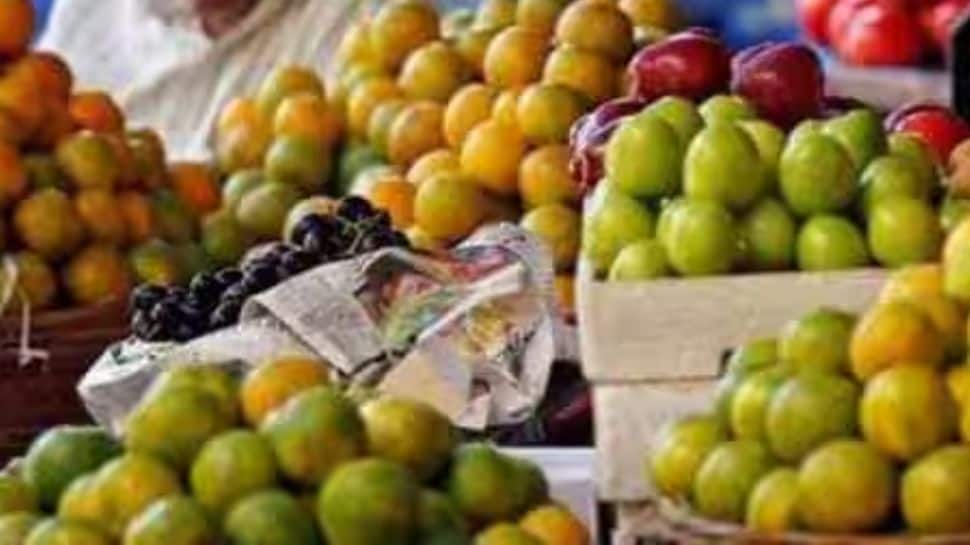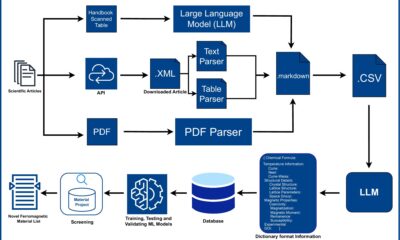Business
Wealthfront files for IPO, joining wave of fintech firms going public in 2025

Wealthfront app.
Source: Wealthfront
Wealthfront, the startup that helped popularize the robo-advisor style of automated investing, filed for a U.S. initial public offering Monday, making it the latest in a wave of fintech firms going public this year including Chime and Klarna.
The company in June filed confidentially for an IPO, but waited until now to make that filing public. That signals that Wealthfront is planning on kicking off its roadshow to pitch shares to investors; an IPO typically follows weeks after the S-1 filing is made public. The company intends to list on Nasdaq under the ticker symbol “WLTH.”
Wealthfront, led by CEO David Fortunato, had $88.2 billion in assets on its platform and served 1.3 million customers as of July 31, according to the filing. It generated $194.4 million in net income on $308.9 million in revenue during in fiscal 2025 which ended on Jan. 31, per the filing.
“Our clients are primarily digital-native high earners who prioritize savings and wealth accumulation,” the company said. “Digital natives typically have large liquid savings with long time horizons ahead, and they are undeterred by corrections and bear markets.”
The company, founded in 2008, has had a long and winding journey to the public markets.
Along with rival Betterment, Wealthfront helped define the robo-advisor category, which uses algorithms to automate investment decisions for customers.
Within years, big banks including Morgan Stanley and Bank of America unveiled their own robo offerings to complement their large armies of human financial advisors.
In 2022, the Zurich-based global bank UBS said it was buying Wealthfront for $1.4 billion in cash, but the deal collapsed as the market turned suddenly skeptical on fintech firms amid rising interest rates.
It’s taken years for the market for fintechs to recover, leading to a rebound in listings this year.
Founded in 2007 and based in Palo Alto, California, Wealthfront employed 359 people as of July 31, according to the filing.
— CNBC’s Jordan Novet contributed to this report.
Business
Energy standoff: US tells Serbia to remove Russian ownership from NIS entirely; Belgrade warns of ‘historic’ decisions ahead – The Times of India

The United States has told Serbia it will not lift sanctions on the country’s largest oil company, NIS, unless Belgrade ensures a complete withdrawal of Russian ownership, Serbian Energy Minister Dubravka Djedovic Handanovic said on Saturday, calling the weeks ahead “some of the most difficult decisions in our history”.NIS — the Petroleum Industry of Serbia — has been under US sanctions since 2022, imposed as part of Washington’s crackdown on Russia’s energy sector following the invasion of Ukraine, AFP reported. The measures have dealt a severe blow to Serbia, leaving the country perilously close to a winter energy crisis, with its only refinery at risk of shutting down.Handanovic said Belgrade had asked the Trump administration to lift sanctions in exchange for a management restructuring, but US officials insisted on full Russian divestment. “For the first time, the US administration has clearly and unequivocally said it wants a complete change of Russian shareholders,” she told reporters.Washington has given Serbia until February 13 to negotiate a solution.NIS is 45% owned by Gazprom Neft, already sanctioned by Washington. Gazprom transferred its additional 11.3% stake to another Russian entity, Intelligence, in September. The Serbian state holds nearly 30%, with the remainder dispersed among minority shareholders.Despite several postponements, the US Treasury began enforcing sanctions on NIS on October 9, intensifying pressure on Belgrade.The Serbian government is now examining whether it may need to take control of NIS to keep the energy system from collapsing. A special cabinet meeting is scheduled for Sunday.Handanovic acknowledged internal resistance, saying “I know President (Aleksandar) Vucic is against nationalisation, as are many of us in the government,” she said. “We will not let our country be put in danger, but we may face some of the most difficult decisions in our history in the coming days.”She urged Moscow to recognise the seriousness of the moment. “I hope our Russian friends will understand the gravity of the situation and help us overcome it,” she said.Serbia, which relies heavily on Russian natural gas, remains one of the few European nations that has not imposed sanctions on Moscow since the Ukraine war began.
Business
Indias Wholesale Inflation Bottomed Out, May Still Remain Negative Through 2025-26: Report

New Delhi: India’s Wholesale Price Index (WPI) or wholesale inflation has “bottomholesale inflation bottomed out, may still remain negated out” and will probably gain slight momentum from November onwards, even as it may still remain in negative territory for most of the remaining months of 2025-26, Union Bank of India said in a report.
The Bank’s 2025-26 WPI forecast is currently tracking below 0.35 per cent amid what are being stated as subdued global commodity prices and a seasonal decline in food prices (with the impact of floods on food inflation seen to be capped).
“Food WPI remains depressed – spatial flooding and supply-chain disruptions did not materialise as expected, keeping food prices contained,” the report read. With 2025-26 Consumer Price Index (CPI) or retail inflation projections of the Union Bank of India also running sharply below the RBI’s latest estimates, it expects a 25 basis points repo rate cut in the upcoming December monetary policy review meeting.
While real GDP growth momentum remains robust, the report asserts that nominal GDP growth is expected to come under pressure due to subdued 2025-26 CPI and WPI projections. India’s wholesale inflation turned negative in October, with the Wholesale Price Index (WPI) recording a decline of (-) 1.21 per cent in October 2025 compared to the same month last year, according to official data released by the Ministry of Commerce and Industry on Friday.
A decrease in the costs of food articles, crude petroleum, natural gas, electricity, mineral oils, and basic metals mainly drove the fall in prices. The Ministry stated that the month-on-month change in WPI for October stood at (-) 0.06 per cent compared to September 2025.
The government releases the index number of wholesale price in India every month on the 14th of every month (or next working day, if the 14th falls on a holiday) with a time lag of two weeks of the reference month, and the index number is compiled with data received from institutional sources and selected manufacturing units across the country.
Inflation has been a concern for many countries, including advanced economies. However, India has largely managed to steer its inflation trajectory in a favourable direction. The RBI held its benchmark repo rate steady at 6.5 per cent for the eleventh consecutive time, before cutting it for the first time in about five years in February 2025.
Business
Gems trade slump: Exports fall 31% in October; bullion volatility, early US stocking hit demand – The Times of India

India’s gems and jewellery exports fell sharply in October, sliding 30.57% to $2.17 billion (Rs 19,172.89 crore) compared to the same month last year, according to data released by the Gems and Jewellery Export Promotion Council (GJEPC), PTI reported.Exports in October 2024 had stood at $3.12 billion (Rs 26,237.1 crore).GJEPC chairman Kirit Bhansali said the decline was largely expected, as overseas buyers had advanced their festive-season stocking before the US tariff came into effect.“Most of the stocking up for the festivals took place before August 27. Therefore, in October the demand was down. The decline in gold and silver exports is triggered by volatile bullion prices,” Bhansali told PTI.He added that exports should revive in November with Chinese market recovery and Christmas demand from major global buyers.Exports of cut and polished diamonds fell 26.97% to $1.02 billion (Rs 9,071.41 crore), down from $1.40 billion (Rs 11,806.45 crore) a year earlier.Shipments of polished lab-grown diamonds also saw a steep slide of 34.90% to $94.37 million (Rs 834.45 crore), compared with $144.96 million (Rs 1,218.25 crore) last October.Gold jewellery exports dropped 28.4% to $850.15 million (Rs 7,520.34 crore) from $1.18 billion (Rs 9,975.17 crore) a year earlier.Exports of coloured gemstones during April–October slipped 3.21% to $250.14 million (Rs 2,173.08 crore).Silver jewellery shipments dipped 16% in October to $121.37 million (Rs 1,072.81 crore), down from $145.05 million (Rs 1,219.01 crore) in 2024.
-

 Entertainment1 week ago
Entertainment1 week agoChina unveils£5.4 bn Fujian, its most advanced aircraft carrier yet
-

 Entertainment1 week ago
Entertainment1 week agoRobert Pattinson jokes about competing with Gen Z
-

 Politics1 week ago
Politics1 week agoIDF lawyers warned of possible Gaza war crimes: US intel findings
-

 Entertainment1 week ago
Entertainment1 week agoAlex Cooper apologizes to Taylor Swift for bizarre admission
-

 Tech1 week ago
Tech1 week agoMagnetic materials discovered by AI could reduce rare earth dependence
-

 Sports1 week ago
Sports1 week agoIsraeli cycling team loses top sponsor despite honoring request to remove country from name
-
Sports7 days ago
College football winners and losers: The catch of the year saves Indiana
-

 Tech5 days ago
Tech5 days agoFrom waste to asset: Turning ethanol production CO₂ into jet fuel












